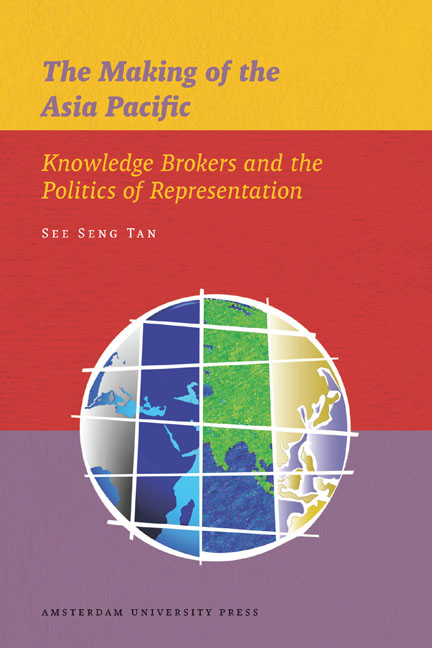Book contents
- Frontmatter
- Dedication
- Contents
- List of Tables
- Acknowledgements
- 1 Introduction: From ‘Pacific Asia’ to ‘Asia Pacific’
- 2 The Desire for Essence
- 3 Knowledge Networks as Agents of Representation
- 4 Representing the ‘Asia Pacific’
- 5 Representing Sovereign States
- 6 Representing the ‘In/Human’ Faces of Asia Pacific Security
- 7 Representing the ‘Authority’ of Knowledge Networks
- 8 Conclusion: A Plea in Three Parts
- Notes
- Bibliography
- Index
- Miscellaneous Ensmatter
6 - Representing the ‘In/Human’ Faces of Asia Pacific Security
Published online by Cambridge University Press: 10 December 2020
- Frontmatter
- Dedication
- Contents
- List of Tables
- Acknowledgements
- 1 Introduction: From ‘Pacific Asia’ to ‘Asia Pacific’
- 2 The Desire for Essence
- 3 Knowledge Networks as Agents of Representation
- 4 Representing the ‘Asia Pacific’
- 5 Representing Sovereign States
- 6 Representing the ‘In/Human’ Faces of Asia Pacific Security
- 7 Representing the ‘Authority’ of Knowledge Networks
- 8 Conclusion: A Plea in Three Parts
- Notes
- Bibliography
- Index
- Miscellaneous Ensmatter
Summary
In a ‘world’ some of the inhabitants may not understand or hold the particular construction of them that constructs them in that ‘world’. So there may be ‘worlds’ that construct me in ways that I do not even understand. Or it may be that I understand the construction, but do not hold it myself. I may not even accept it as an account of myself, a construction of myself. And yet, I may be animating such a construction. (Lugones 1987: 10, emphasis in the original)
Among the host of knowledgeable practices circulated by Track 2 networks that seek to affirm the post-Cold War Pacific Asia as a region in which an ethic of obligation and responsibility – coloured, for sure, by local variations and idiosyncrasies – has a place, few examples stand out more than regional discourses on ‘non-traditional security’ (Caballero-Anthony, Emmers & Acharya 2006; Dosch 2006; Emmers 2005; Emmers et al. 2006; Jones 2011; Tan & Boutin 2001), ‘human security’ (Acharya 2001b; Axworthy 1997; Caballero-Anthony 2004a; Evans 2004; Khong 2001; Paris 2001; Peou 2009; Thiparat 2001) and ancillary concepts such as ‘the responsibility to protect’ and/or the protection of civilians (Bellamy & Beeson 2010; Bellamy & Davies 2009; Bellamy & Drummond 2011; Caballero-Anthony & Chng 2009; CSCAP 2011; Evans 2004; Haacke 2009a; Tan, S.S. 2011b). As chapter 4 has shown, a serendipitous confluence of neo-realist and neo-liberal perspectives in the immediate aftermath of the Cold War facilitated a portrait of the ‘Asia Pacific’ as a realm of abjection, inferiority and subalternity – a site where great powers play out their strategic rivalries while the weaker residents in the region, ASEAN included, look on haplessly, supposedly unable to influence regional affairs in directions they might have otherwise preferred. Beyond ‘conventional’ strategic considerations, Asia Pacific security intellectuals and practitioners have begun perdurable conversations on non-traditional security (or ‘NTS’, the acronymic shorthand employed in the literature) and human security, not least since the Asian financial crisis that blighted Pacific Asia in 1997- 1998. Other than economic crisis, these conversations include persistent references to a host of ‘challenges’, ‘risks’ and ‘threats’ (take your pick of terms) ranging from natural and climate-related disasters, viral pandemics, piracy and armed robbery at sea to domestic and international acts of terrorism inspired by religion.
- Type
- Chapter
- Information
- The Making of the Asia PacificKnowledge Brokers and the Politics of Representation, pp. 135 - 154Publisher: Amsterdam University PressPrint publication year: 2013

